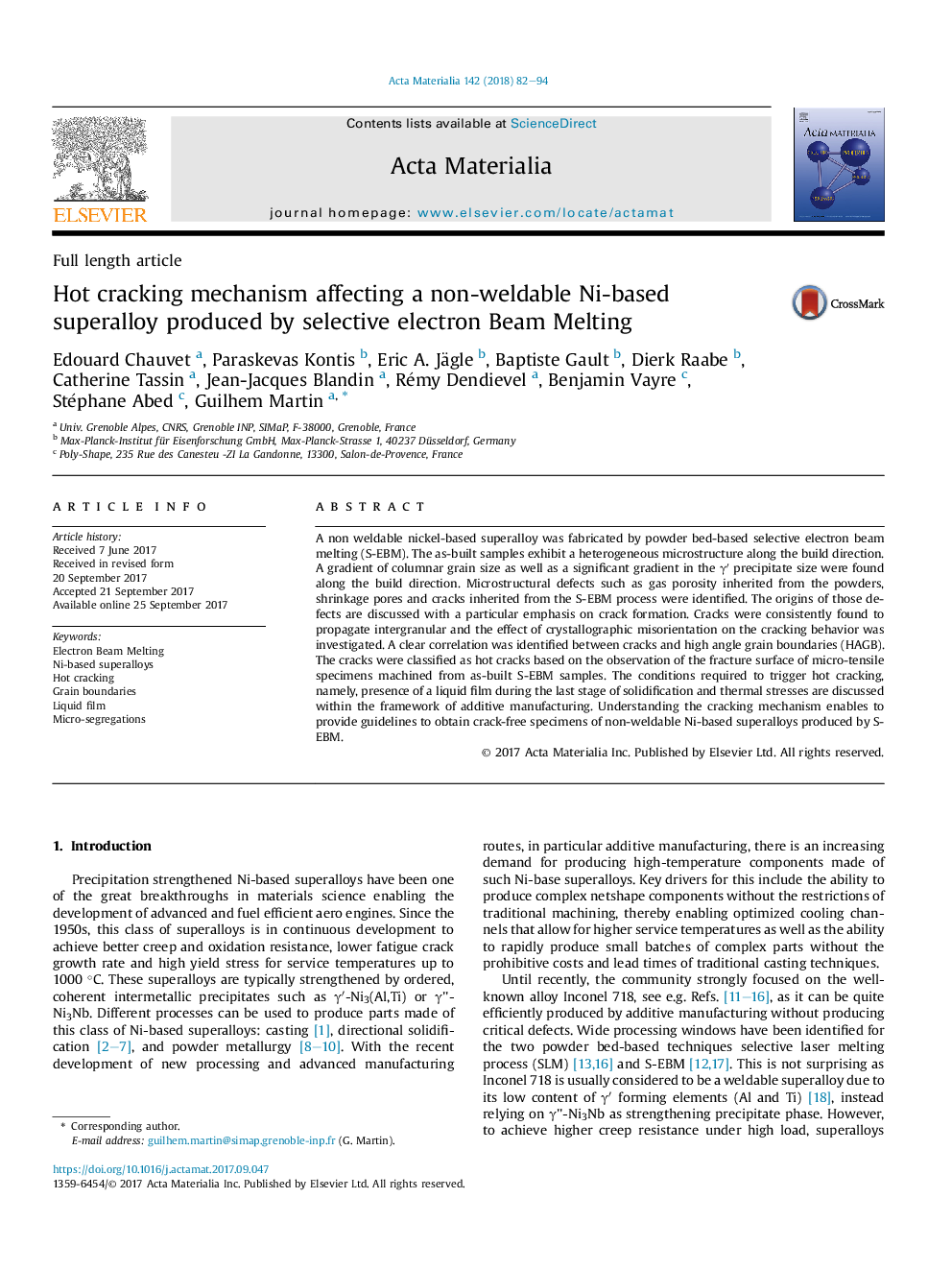| Article ID | Journal | Published Year | Pages | File Type |
|---|---|---|---|---|
| 5435696 | Acta Materialia | 2018 | 13 Pages |
A non weldable nickel-based superalloy was fabricated by powder bed-based selective electron beam melting (S-EBM). The as-built samples exhibit a heterogeneous microstructure along the build direction. A gradient of columnar grain size as well as a significant gradient in the γⲠprecipitate size were found along the build direction. Microstructural defects such as gas porosity inherited from the powders, shrinkage pores and cracks inherited from the S-EBM process were identified. The origins of those defects are discussed with a particular emphasis on crack formation. Cracks were consistently found to propagate intergranular and the effect of crystallographic misorientation on the cracking behavior was investigated. A clear correlation was identified between cracks and high angle grain boundaries (HAGB). The cracks were classified as hot cracks based on the observation of the fracture surface of micro-tensile specimens machined from as-built S-EBM samples. The conditions required to trigger hot cracking, namely, presence of a liquid film during the last stage of solidification and thermal stresses are discussed within the framework of additive manufacturing. Understanding the cracking mechanism enables to provide guidelines to obtain crack-free specimens of non-weldable Ni-based superalloys produced by S-EBM.
Graphical abstractDownload high-res image (118KB)Download full-size image
